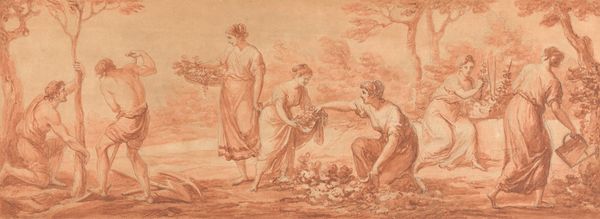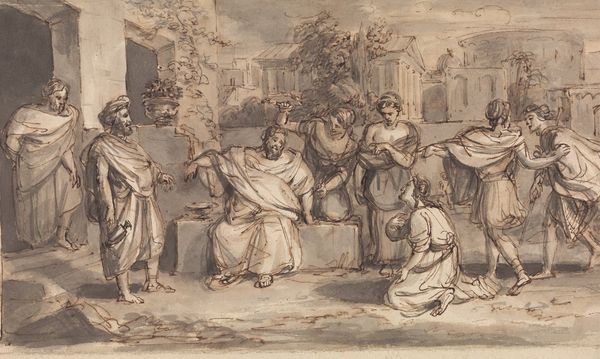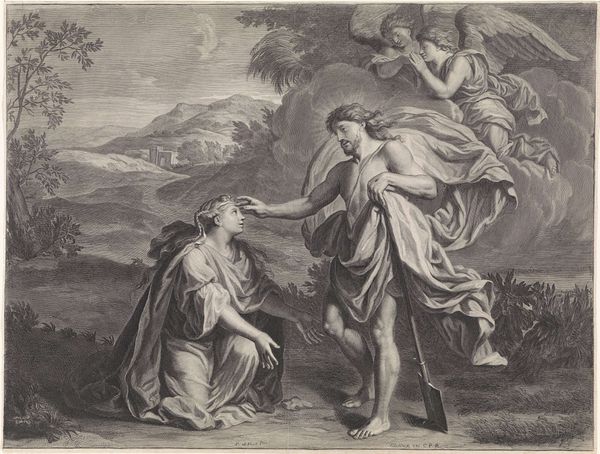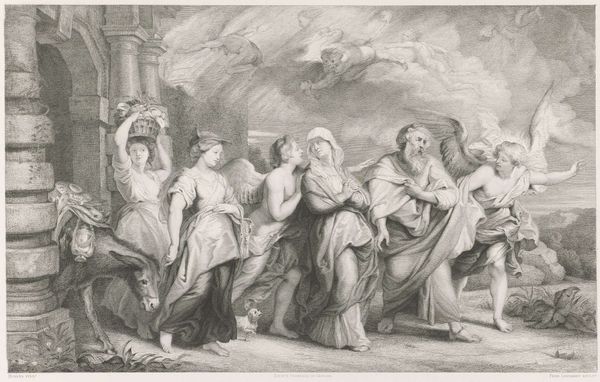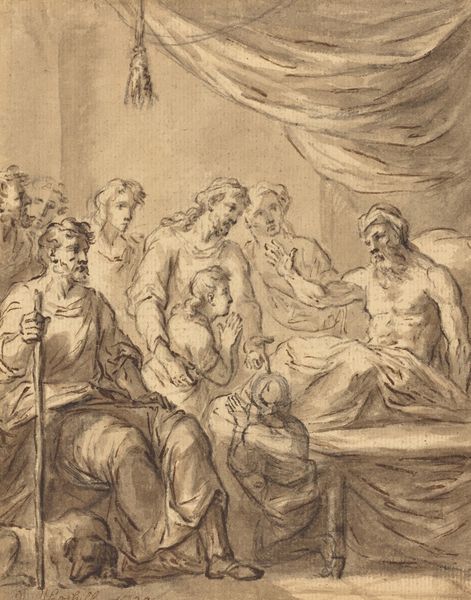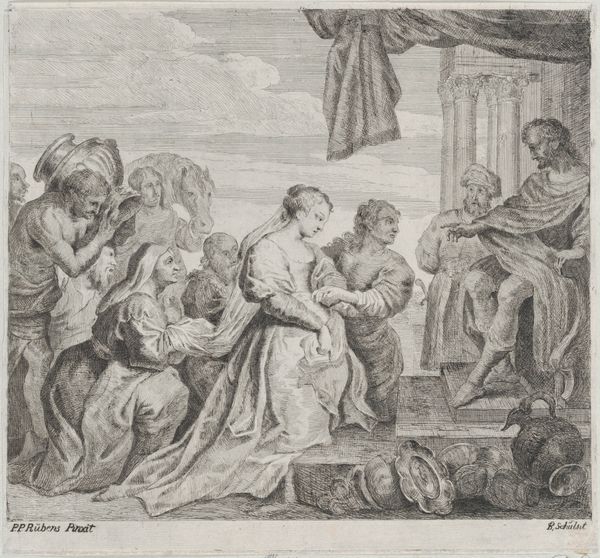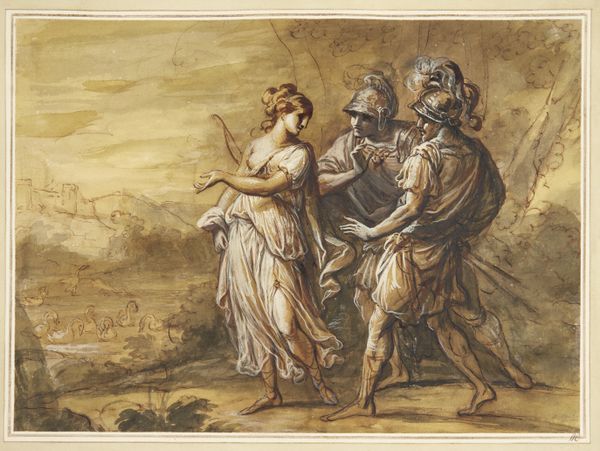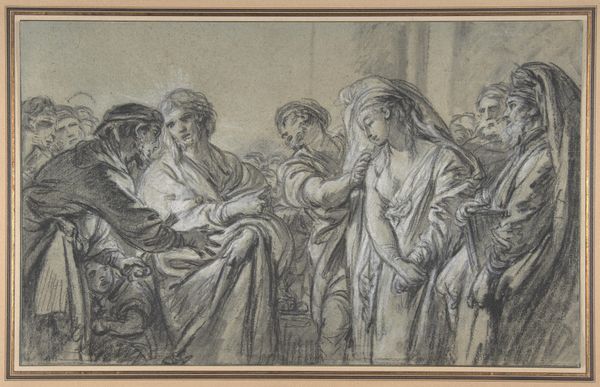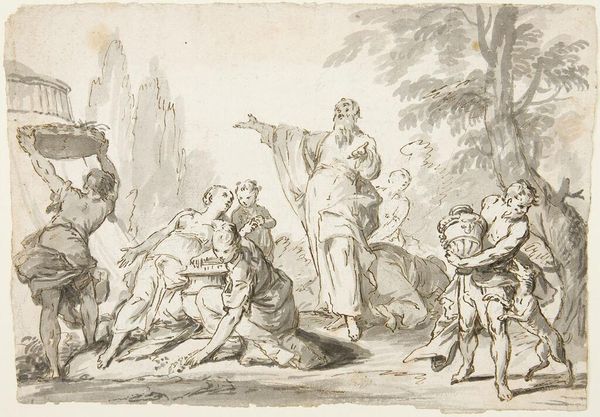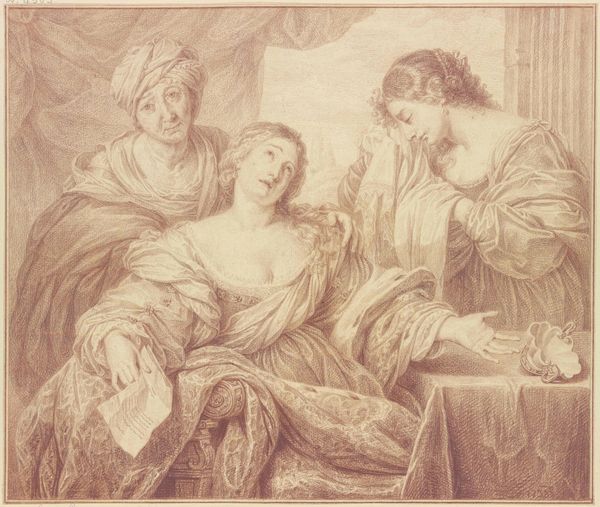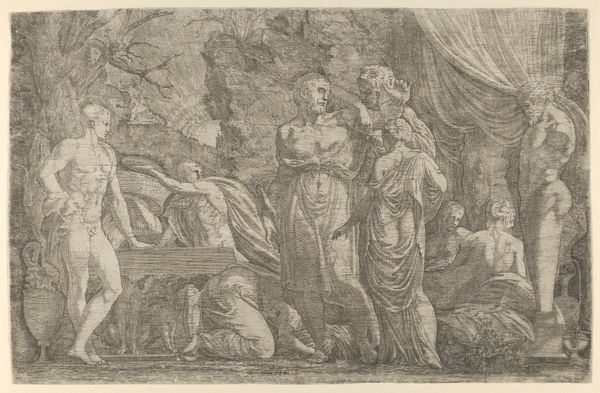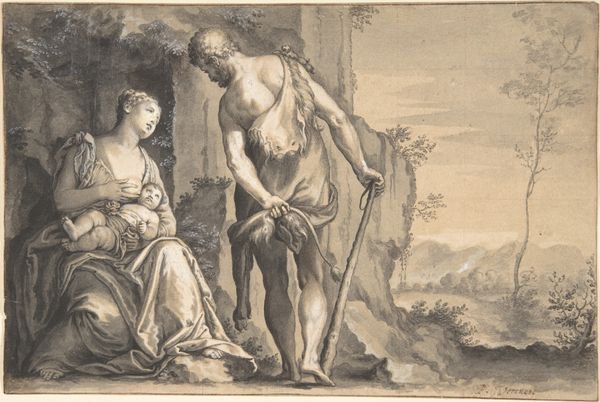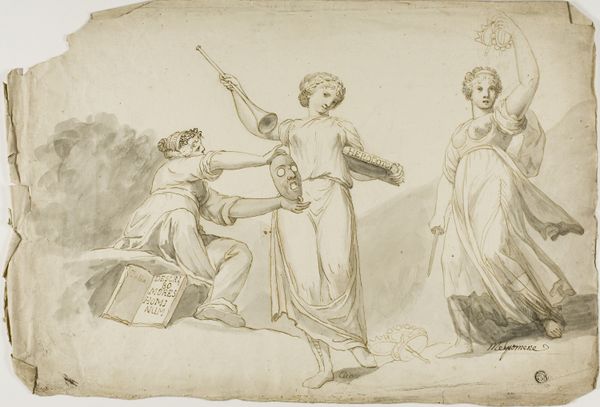
drawing, ink
#
portrait
#
drawing
#
neoclacissism
#
allegory
#
charcoal drawing
#
ink
#
pencil drawing
#
portrait drawing
#
history-painting
Copyright: Public Domain: Artvee
Curator: This sepia drawing, attributed to Angelica Kauffmann and created sometime between 1740 and 1807, is titled "Three Muses in Conversation." What are your initial thoughts? Editor: Immediately, I notice the contemplative atmosphere. It's very restrained and feels academic. I see these figures posed, but somehow, despite their classical garb, the overall composition doesn't scream vibrancy. They appear almost burdened, or perhaps deep in thought. Curator: Kauffmann's involvement in the neoclassical movement is vital here. Consider the way she renders these women; we observe carefully draped robes, classical profiles. They reflect the prevailing artistic desire to emulate the aesthetics and the cultural values of ancient Greece and Rome. Editor: Absolutely. The way their garments are arranged, clinging but not too revealing, harkens back to that idealized form. The lack of vivid color also lends a sense of historical gravitas, pushing beyond simple beauty to represent higher intellectual spheres. Yet it feels constructed, self-conscious even. Curator: Undoubtedly. These women, likely allegorical figures representing the arts or sciences, are shown within a carefully staged landscape, conforming to specific historical conventions. Kauffmann wasn't just depicting women, she was constructing a public-facing statement about their intellectual merit. It should be noted she gained widespread success in a male dominated world. Her membership of the Royal Academy of Arts in London demonstrates a monumental step forward for female artistic presence. Editor: And I see something subtly subversive within the representation itself. Although restrained and allegorical, presenting the muses in a context of discussion allows for agency to emerge. A quiet revolt of conversation against those established standards for representing women. Are they confined to passive beauty, or participating in something? The question hovers in the air. Curator: Well put. It also brings forth interesting questions concerning artistic representations and social norms that Kauffmann faced as a successful female artist during the 18th century, and the tension that arose as a consequence. A drawing like this offers us space for exploring the relationship between the personal experience and social context. Editor: It makes you think about whose voices get amplified throughout art history and who are relegated to its quiet corners. There's a definite push-and-pull between reverence for the classical ideal and something more probing—an assertion of selfhood amidst restriction, a beautiful paradox.
Comments
No comments
Be the first to comment and join the conversation on the ultimate creative platform.
